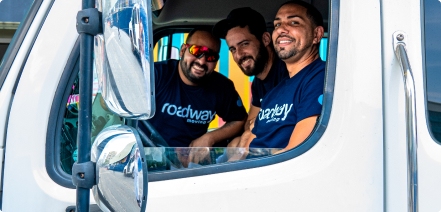

We love our bikes. Both a useful tool and a reflection of our personality, bicycles can be some our most precious possessions, and most reliable ways to get around.So when it comes to a big move, don’t just throw your bike in the back of the truck. This almost guarantees damage in transit.
Supplies You’ll Need
- Cardboard Bike Box
- Smaller Cardboard Box
- Bubble Wrap
- Packing Tape
- Foam Protection Tubes (optional)
- Zip Ties
- Allen Wrench Set
Finding a Box
Choosing the right box to pack your bike in is essential. Though you could purchase ultra-protective travel cases, if you’re not planning on transporting your bike on a regular basis, it’s simply not worth the hefty price tag.Instead, head down to your local bike shop. Most bikes are delivered to the store in cardboard boxes. This means that nearly all bike shops will have leftover boxes that they’d otherwise throw away.Ask an employee if they have any extra boxes they’d be willing to give away. If so, take a look at the quality. They don’t have to be in great condition as minor tears and holes can easily be patched up. However, the box itself should be solidly held together.Another option is using a twin mattress box. These often make for the perfect sized container for bikes. If you have one lying around, it could save you one less thing to search for.Once you’ve found and chosen your box, take it home and use heavy-duty tape plus additional cardboard pieces to patch up any rips or openings.If the box has intentionally cut holes for use as handles, do not cover them up. These will be extremely helpful for you and the movers to help in holding the large, heavy box.TIP: If you anticipate another move, fold up the box after this move and store. They often work great for multiple uses.In addition to the bike box, find another smaller box approximately the size of a medium suitcase, though size can differ depending on the amount of bike accessories. This is where you will store tools, hardware, panniers, bottle holders, etc.We strongly recommend you use only one extra box that’s big enough to hold all additional pieces. This will help keep everything together when it’s time to reassemble your bike.
Disassembling Your Bike
Step OneFirst off, be sure to protect the floor you’re working on to minimize the chance of scratching the floors or staining the carpets with grease. Neoprene mats and floor runnersspecifically made for moving are prefect for floor protection.Next, remove all of the smaller pieces and accessories with your wrenches. Though every bike may vary, this typically means:
- Water bottle holders
- Front and rear racks
- Panniers
- Front and rear fender
- Pedals
Do always ensure that the pedals are removed. Otherwise, they can easily burst through the box while moving.Step TwoCarefully wrap all of these pieces in bubble wrap. This not only protects the piece itself, but also keeps them from scratching or damaging anything else. Place them in the smaller box.If you’d like additional protection for your bike, place foam tubing, like pipe insulation or bubble wrap, around the bike frame. This will minimize the chances of scratches during the move. Use tape or zip ties to keep wrapping in place.Also store all very small pieces like hardware, nuts, bolts, screws, tools, etc. inside a plastic bag as soon as it’s no longer being used. This will make it much easier to find everything once it’s time to put your bike back together.Step ThreeNow that many of the smaller items have been removed, it’s time for the bigger items.Deflate the tires from the front and back wheels. This is especially important if air travel is involved as inflated wheels can explode.Once the tires have been completely deflated, take the front wheel off. We also recommend taking off the back wheel, though this is not required.If the back wheel is removed, the bike chain, rear cassette (cogs), and derailleur will have to be removed as well.Put any now separate pieces to the side. Carefully wrap all pieces attached to the chain with bubble wrap. Snuggly attach the chain to the body of the bike with zip ties.After the wheel(s) have been deflated and removed, place to the side while you finish disassembling the bike.TIP: If the wheel isn’t easily coming off, ensure that you’ve completely released the brakes.Step FourRemove the entire seat from the bike. Be sure to carefully wrap this piece up, as the bar is notorious for causing scratching and damage during transit.
Boxing Up Your Bike
Now that your bike has been properly disassembled and protected, it’s time to pack up your back.Step OneEnsure the bike box has been properly reinforced and feels sturdy. Do any last maintenance using heavy-duty tape if needed.Step TwoTurn the handlebars to the side and carefully slide bike into the box. Pay attention to any areas where there may be additional friction between the bike and box during transit, such as where the box meets the cassette, or near the handlebars.Use additional cardboard to further reinforce these areas to avoid box breakage.Step ThreePlace all larger bike pieces into the box. This will likely include:
- Front and back tires
- Bike seat
- Fenders
- Bike racks
Use zip ties to attach these pieces snuggly to the bike. This will avoid excess movement during the move.Placing extra pieces of bubble wrap within the empty areas will also help protect your bike from damage.TIP: Double-check that there is no metal-to-metal contact to avoid any damage. Place additional bubble wrap, foam tubes, or cardboard pieces to minimize the possibility of damage.Step FourAfter everything has been placed inside the box, thoroughly tape everything closed with heavy-duty tape, like Duck Brand Max Strength Packaging Tape.Again, be sure NOT to tape the handle holes shut.Once taped up, write your contact information and address of the final destination on the box itself. Also attach a piece of paper with your contact information to the bike itself. This will ensure your bike arrives safely at your new home, no matter what.
Packing the Extra Box
Step OnePlace all of the properly wrapped smaller pieces together in the additional cardboard box. Be sure to include the plastic bag filled with your tools and additional hardware as well.Like the bike box, use additional bubble wrap to fill up extra space as to avoid excess movement inside the box.Step TwoWrite your contact information and final destination onto the smaller box. In addition, be sure to largely label this box as a “Bike Parts” box. This will help you and the movers know it should stay with the larger bike box.
Ready to Go
Now your bike is safely and securely ready for the big move!
